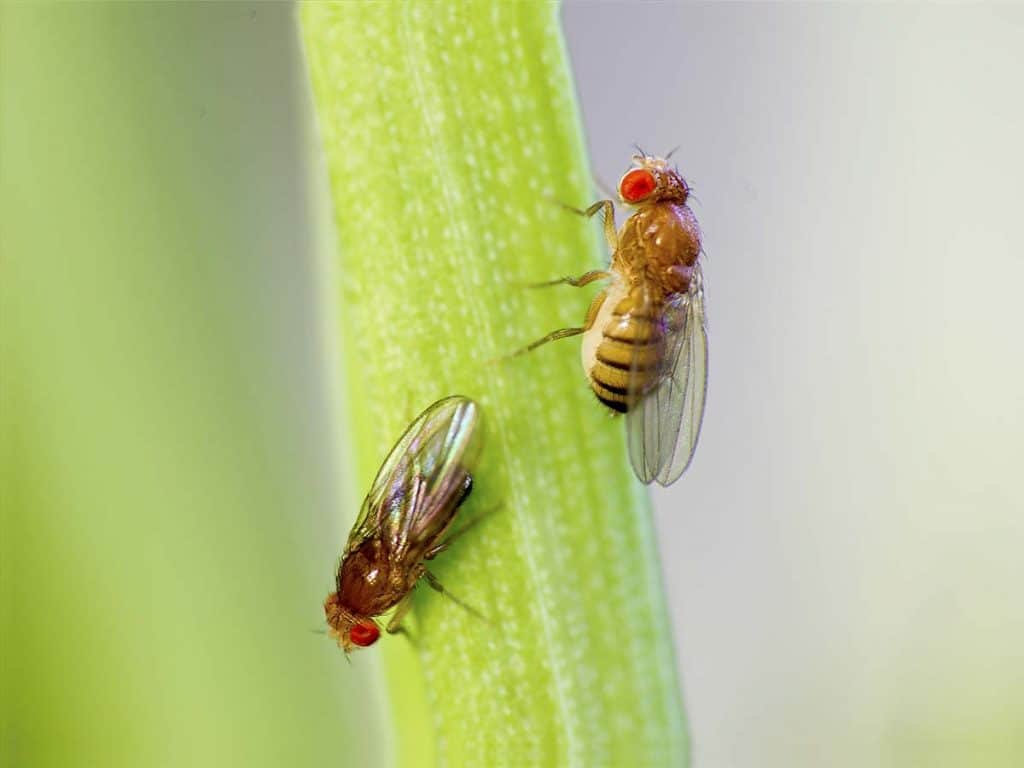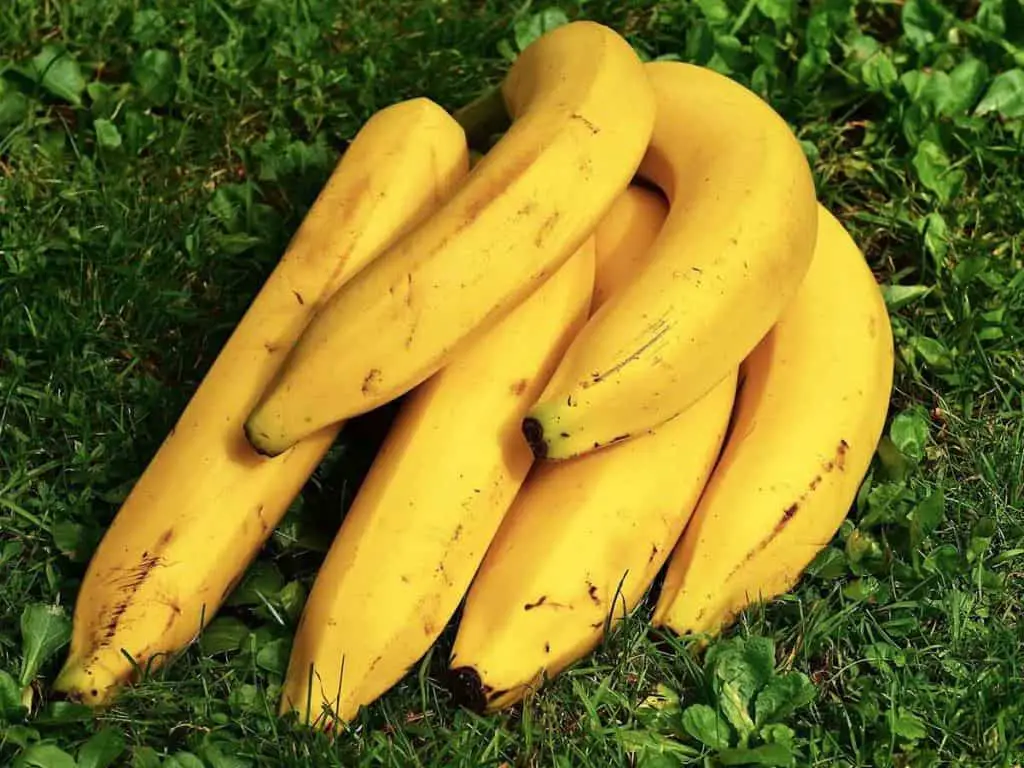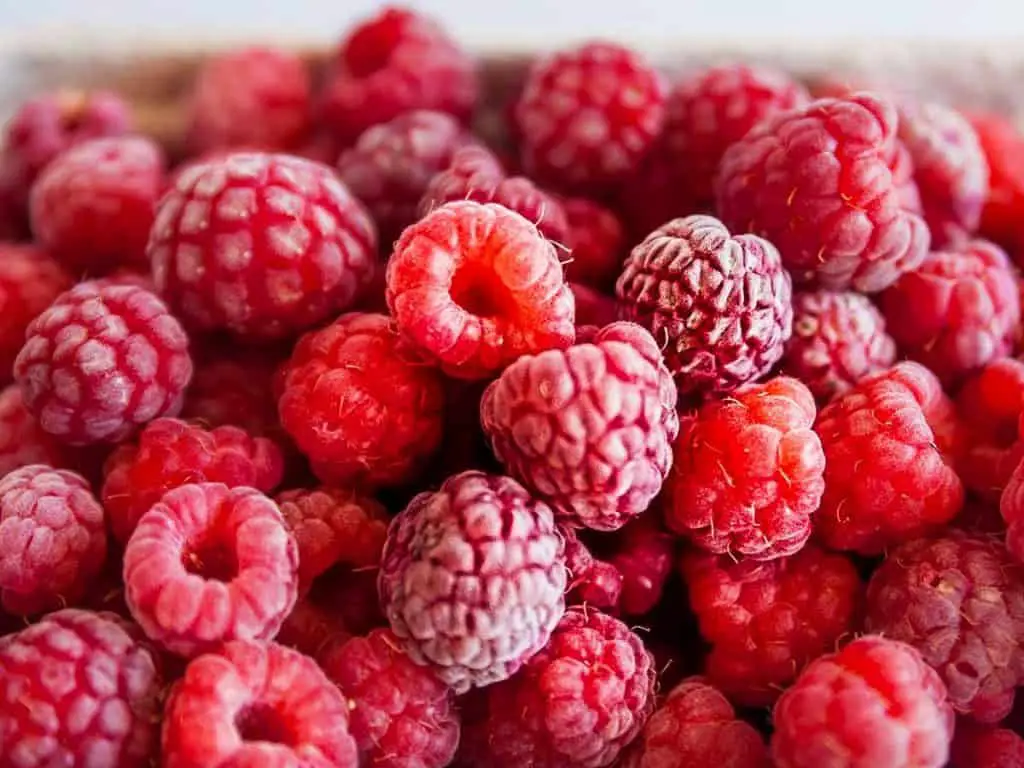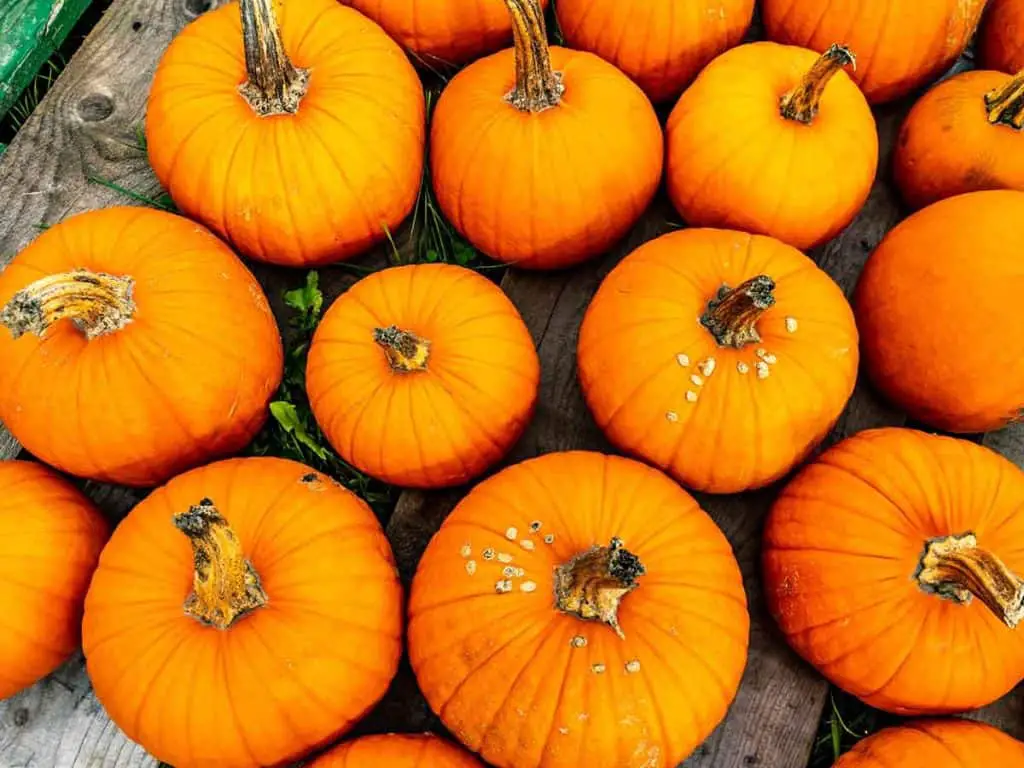Killing Fruit Flies (6 DIY + 4 Products) & Prevention Tips
Fruit flies, with their fast-breeding cycle, are the favorite tool of genetic experiments.
That ability to lay hundreds of eggs that hatch within 24 hours turns one fruit fly in your home into a troublesome cloud.
In Summer and Fall, when ripe fruit is plentiful, fruit flies increase and can invade your home in an annoying cloud of small brown insects.

What Causes Fruit Flies in the House?
Two things attract fruit flies:
- Fermentation
- Moisture
Your home is likely to be a source of both in the form of empty cans or bottles, discarded vegetable and fruit peelings, and other food waste.
Fruit ripening in the fruit bowl will attract fruit flies with its sweet scent, especially in high summer and fall when these tiny insects are plentiful, and you have open windows and doors.
What Causes Fruit Flies in the Kitchen?
The kitchen is an attractive hunting ground for fruit flies because you have:
- wet drains in your sink,
- spills on your work surfaces,
- stored fruit and vegetables, and
- an open kitchen waste bin.
These are prime attractions for the hungry fruit fly and its search for a place to lay its eggs.

How Do You Prevent Fruit Flies?
Your best way of preventing fruit flies from getting comfortable in your home is to remove all potential attractions:
- Keep food in closed boxes in the fridge or freezer.
- Don’t leave fruit or flowers out on display in Summer and Fall.
- Use enclosed trash bins.
- Empty trash bins daily.
- Wash all fresh produce thoroughly and dry them before storing.
- Clean up spills immediately.
- Keep food preparation surfaces clean and dry.
- Keep fruit and vegetables in fruit-fly proof breathable bags.
- Deploy insect traps in strategic locations.
- Use a bug repellent at doors and windows.
Prevention is always better, but your home is attractive to fruit flies. When prevention does not work, a fruit fly trap is the best way to eliminate fruit flies.
How to Get Rid of Fruit Flies
The best way to get rid of fruit flies naturally is to use their behavior to trap them in a DIY or bought fruit fly trap.
Most DIY fruit fly traps provide an organic way to get rid of fruit flies, but many purchased traps follow the same principles.
The 6 Best DIY Traps for Dealing with Fruit Flies
While prevention means you don’t have a problem with fruit flies, one discarded banana skin can mean you wake up the next day to a fruit fly colony in your home.
If you regularly get fruit fly visitors, then the best DIY methods for removing them from your home involve some simple DIY traps combined with an attractive bait.
(Note: The bait options come after the 6 DIY traps below)
1. Paper or Cardboard Cone and a Glass Jar
An inverted paper cone in the top of the glass jar encourages fruit flies to enter the jar through the gap at the cone’s top.
When the fruit flies enter the glass jar, they find it difficult to exit because of the cone’s shape – they fly upwards but find it difficult to navigate back to the hole in the cone.
2. Bowl or Jar and Plastic Wrap
A film of plastic wrap over a bowl or jar with a few holes pierced with a needle allows the fruit fly to enter but makes it exceptionally difficult for them to leave.
3. Plastic Lunchbox
A plastic lunchbox or other food saver container with a tight-fitting lid makes an ideal fruit fly trap if you add some bait and pierce some small holes in the top.
Instead of using a plastic lunch box, you can use a recycled food container like the ones used for cream cheese or ice cream.
4. Bottle Trap
You can use a plastic or glass bottle with holes pierced in the cap or cling film. In practice, a glass of wine or beer bottle makes a functioning fruit fly trap without the need to create a stopper or lid.
The best bottle traps have a narrow neck and a wide body – some fancy liqueur or scent bottles work exceptionally well as fruit fly traps.
5. Sealed Cardboard Box
You can convert a cardboard box into a fruit fly trap with some solid bait like a chopped fruit piece.
When the box is fully closed, use parcel or masking tape to seal any seams to prevent fruit flies from escaping. Small holes pierced with a needle in the top give the fruit flies a way in but no way out.
Cardboard tubes with plastic lids are ideal fruit fly traps as you don’t need to seal the container, and you can pierce holes in the lid.
It is best to use a solid bait with a cardboard box trap and avoid any liquid items.
6. Liquid Dish Soap Bottle
The squeezy bottles for dish soap make ideal fruit fly traps with the small hole in the top providing the only way in.
Plus, it is best not to wash out the bottle but to use it when there is a small film of soap left behind as this helps to kill the trapped insects.
These six DIY fruit fly traps show how to get rid of fruit flies naturally and without difficulty.
Best Bait for Fruit Fly Traps

Fruit flies will home in on the smell of ripe fruit and fermentation, which gives you several options for solid and liquid baits for your DIY fruit fly traps:
- Cut up pieces of overripe or fermenting fruit.
- Banana skins and other fruit peelings.
- Apple cider vinegar – organic with a robust fermented apple smell is best.
- Vinegar is a fermentation product, and you can use any vinegar, including leftover pickle vinegar.
- Wine, beer, and cider.
- Yeast – the same mix you use for bread making.
Fruit flies find fermenting and overripe fruit as attractive bait because they are looking for food and a place to lay their eggs on a food source.
Fruit flies are not attracted to fresh citrus or fragrant aromatherapy oils.
Your Preferred Method for Getting Rid of Fruit Flies
If you have ethical concerns about killing any life form, then you can take your fruit fly traps far from your home and release them.
In practice, even if you don’t include a killing mechanism in your fruit fly trap, most of the fruit flies will die naturally while trapped.
Fruit flies breed incredibly fast and are not an endangered insect. Inside your home, fruit flies are a pest, and the most practical approach is to trap and kill them to remove the infestation.
A liquid trap of vinegar or alcohol attracts fruit flies, and most of them drown while in the trap. You can add a layer of liquid soap or water to a fruit baited trap to kill some fruit flies.
When you look at your fruit fly trap, there will always be some live insects. Opening the fruit trap will release these pests back into your home.
You can use a microwave to make sure all the fruit flies in your trap are dead before you empty it and rebait. About 30 seconds on full power is sufficient to kill all fruit flies in your trap.
If you use a jar with a paper cone or a bottle trap, you may find it more convenient to fill the container with boiling water to kill any trapped fruit flies.
You will need a new paper cone, but you can be confident that no fruit flies will escape to breed in your house. This process helps to clean out the trap ready for you to add fresh bait.
The 4 Best Fruit Fly Traps to Buy
If you have a fruit fly problem, you may want to invest in a product that will quickly trap and kill your fruit flies and rid you of the pests with minimal effort.
The following products are popular because they are affordable and efficient at getting rid of fruit flies.
Best UV Fruit Fly Trap:
#1 KATCHY Indoor Insect and Flying Bugs Trap

There are three stages to this innovative insect trap that will deal with your fruit flies, gnats, and mosquitoes.
The UV light works to attract flying insects; the turbine fan helps suck the insects into the trap, and the interior glue board traps and kills the fruit flies.
The glue board is replaceable, and you can increase the attractiveness to fruit flies by including a cottonwool ball soaked in apple cider vinegar inside the trap.
What you get with this fruit fly trap:
- Stylish design fits into most home decors allowing you to position it next to the fruit bowl or trash can.
- Multiple-use and deals with more than fruit flies.
- Replaceable glue boards, so you get years of use from this simple device.
- Choice of standard or low-speed settings on the fan, depending on how bad your infestation is.
- No harmful chemicals.
- Can dispose of glue boards in a standard trash can.
Best Fruit Fly Sticky Trap:
#2 Garsum Sticky Trap

A pack of 12 natural fruit fly traps that meet organic farming standards.
These attractive butterfly and flower shape traps are suitable for indoor use (fruit bowls, vegetable racks, and houseplant pots) and outdoors amongst your vegetable and fruit plants.
Most flying insects (including fruit flies) are attracted to yellow (which is why the most common flower color is yellow), and once they land, the sticky glue traps and kills them.
You can see this trap working, and you know when to replace it with a fresh one.
This trap is one of the best ways to get rid of fruit flies naturally. A stuck fruit fly can’t lay eggs on your fruit.
What you get with this fruit fly trap:
- Economical.
- Suitable for organic gardening.
- Fragrance-free.
- No toxic chemicals.
- Not obvious insect traps.
- You can see them working and monitor your fruit fly problem at a glance.
- Can throw them in the standard trash can.
- Straightforward to put them where you need them.
- Suitable for indoor and outdoor use as they are UV resistant.
Best Fruit Fly Trap Container:
#3 RSVP Endurance Fruit Fly Trap

This dedicated fruit fly trap is a ceramic and steel version of a DIY fruit fly trap. It is economical, good looking and you can wash it in your dishwasher.
You bait it with a mixture of apple cider vinegar and dish soap (recipe supplied), so once you buy this fruit fly trap, you are self-sufficient for life.
It is a compact and attractive design in white that you can position in problem areas and move around your home. The ceramic base prevents damage to your furniture, and this versatile fruit fly trap can accompany you to your barbecue to keep the fruit flies at bay.
What you get with this fruit fly trap:
- Does not require power.
- Economical to buy and use.
- Looks like a classic piece of kitchen or household equipment.
- Dishwasher safe.
- Straightforward to operate.
Best Fruit Fly Trap Bait:
#4 Eco Defense Fruit Fly Trap

This multipurpose liquid solution attracts and kills fruit flies (and other insect pests). It is non-toxic as it contains natural materials and no pesticides.
It is safe to use around your food and will deal with fruit fly infestations in drains.
You pour about an inch of the liquid into a small bowl or jar and place it where you have your problem fruit flies – next to the fruit bowl, near food preparation areas, or on a windowsill.
The liquid attracts fruit flies and then kills them without causing harm to you or the planet. When it is time to change the liquid, you flush it, and the dead flies down the drain.
It breaks down naturally in the environment.
What you get with this fruit fly liquid attractant:
- All-natural products.
- No insecticides.
- Food-safe.
- Long-lasting.
- Economical.
- Versatile for use with drains.
- Fast-acting.
Things That Repel Fruit Flies

In the spirit of preventing fruit flies from entering your living space, you can consider actively repelling them with a home-made spray.
Fruit flies are not attracted to essential oils, so a spray made from a mixture of essential oils can make your home smell nice and have the benefit of deterring fruit flies from wandering in.
DIY Room Spray
An effective fruit fly and other insect repellent spray:
- Water – about one pint.
- Witch Hazel – between one and three tablespoons.
- Liquid coconut oil – about one tablespoon.
- Three or four essential oils – ten drops of each.
Mix the oils and Witch Hazel first and then put all the ingredients in a spray bottle and fill up with water. Shake to mix before spraying.
Water
Water is a cheap and available base that disperses into a fine mist when used in a spray bottle. The water is a carrier for the essential oils.
You can use tap water or cooled boiled water depending on your preference. There is no need to use expensive bottled water for this room spray.
Witch Hazel
Use an alcohol-free witch hazel because the smell of alcohol attracts fruit flies.
The Witch Hazel acts as an emulsifier dispersing the essential oil into the water. Oil and water don’t mix, so Witch Hazel helps the aromatherapy oils disperse in the water.
You will still shake the bottle before using it just like a salad dressing, but Witch Hazel’s presence helps dispersion and retention of the aromatherapy oil fragrance.
You rely on the scent to repel the fruit flies, so prolonging the fragrance gives you a longer-lasting and more effective room spray.
Coconut Oil
Fruit flies don’t like the smell of coconut oil, which is one reason for its inclusion in this fruit fly repellent spray.
The other reason is that coconut oil has some antibacterial properties and acts as a carrier oil for some aromatherapy fragrance. The coconut oil helps keep your room spray in good condition.
Essential Oils
Essential oils are concentrated essences of plants containing many volatile compounds that the plant uses in its defense against pests.
A few drops go a long way. Using a combination of essential oils in your room spray gives you a range of scents and benefits.
Excellent essential oils for repelling fruit flies include:
- Citronella
- Cinnamon
- Cedarwood
- Lavender
- Peppermint
- Clove
- Lemongrass
- Eucalyptus
- Basil
You can have fun tailoring your room spray to your scent preferences because if you enjoy using the spray, you will regularly and effectively deploy it.
Do not spray your fruit repellent spray directly on food. Instead, spray it on wet mop heads and around windows and doors. You can also spray it on curtains and fly screens.
Solid Air Freshener and Fruit Fly Repellent
As an alternative to a room spray, you can make a solid air freshener you can place in glass jars or bowls at strategic points around your home.
Use solid coconut oil as your base material and mix in one or two essential oils. The ratio is about 30 drops of essential oil to 20g of coconut oil.
If you want to protect your fruit bowl, you can strategically position your air freshener near the bowl. This air freshener helps protect your table from fruit fly pests if you set out a meal containing fruit.
Citronella Candles
You can buy citronella candles for outdoor use to keep all insects away from your patio or barbecue.
You can also create your own by adding a few drops of citronella oil to the liquid wax puddle of a candle immediately after extinguishing the flame. The oil will disperse into the melted wax, ready to release when you next light the candle.
Never add essential oils directly to a burning candle because some of them are flammable!
Incense Sticks
The smoke from incense sticks repels fruit flies and effectively kills any insects in a closed room.
If you have a severe infestation, it may be worth fumigating (literal meaning to smoke out) the room with a problem.
Are Fruit Flies Harmful to Humans?
Fruit flies and their larva feed on the surface of overripe and fermenting fruit. You are not at risk of ingesting them or their eggs because you will cut away any spoiled or bruised portions of fruit or vegetables before consumption.
The main health risk from fruit flies is the possibility that they pick up diseases and transfer them onto a clean surface. The same risks you face from household flies.
Unfortunately, fruit flies can carry the three main bacteria involved in food poisoning – salmonella, listeria, and E. coli. Fruit flies are more than just an annoying insect but a potential source of disease and infection for your family.
To protect yourself against disease, prevent fruit fly from accessing your fruit and vegetables, wash all produce before consumption, and store securely and clean all your food preparation surfaces before and after cooking.
Your grandmother’s advice of always washing your hands before coming to the dining table is solid health advice for everyone with or without a visible fruit fly problem.
Fruits and Vegetables That Attract Fruit Flies
Like people, fruit flies have their preferred foods and smells.
Although they will feast and lay eggs on any ripe and rotten fruit, they love the smell of bananas, peaches, rotten potatoes, rotting onions, and ripe berries.
But they are also fond of wet mop heads and drains.
How to Get Rid of Fruit Flies on Bananas?

To get rid of and prevent fruit flies from infesting your bananas, try a combination of the following tips:
- Wash and dry your bananas when you get home to remove any eggs or hitchhikers.
- Sprigs of basil in your fruit bowl help to mask the banana scent.
- Put a fruit fly trap close by the bananas.
- If you mainly use bananas in smoothies, keep them chopped in the freezer.
- Store ripe bananas in the fridge.
- Store your bananas in a closed paper or textile bag – but they will ripen quickly.
- Plastic wrap the top and the bottom of your bunch of bananas to cut down on the release of ripe banana scent.
How to Get Rid of Fruit Flies on Peaches?

The smell of ripe peaches is a summer smell that makes your mouth water in anticipation of the delicious taste of peach.
All the tips for bananas work for peaches. A couple of additional tips for getting rid of fruit flies on peaches are:
- Peel your peaches before eating them – fruit flies and their eggs are on the surface and not inside the flesh.
- Store your peaches in a bowl with plastic wrap covering the whole dish – leave enough air to circulate but keep fruit flies from smelling or landing on your fresh peaches.
How Do You Get Rid of Fruit Flies on Raspberries?

In the garden, your best approach is to hang fruit fly traps around the raspberry canes.
In the home, your best approach to keep fruit flies away from raspberries is to buy them only when you intend to eat them. Wash and dry the raspberries (gently) and put them straight into a sealed container in the fridge until you want to use them.
Ripe raspberries have a short shelf life and are fruits that you buy and use within a short timescale.
How to Get Rid of Fruit Flies on Tomatoes?

If you are growing tomatoes in the greenhouse or garden, you can use fruit fly traps to discourage fruit flies from taking advantage of the ripe fruit.
Inside the greenhouse, you can burn incense sticks to fumigate the area and deter and kill off the fruit flies. This treatment’s effectiveness depends on how bad your fruit fly infestation is and your greenhouse size.
Refrigeration ruins the tomato’s complex flavor profile, which means you need to be more careful in protecting your tomatoes.
Try to keep your tomatoes in a covered container – a sealed paper or cloth bag inside your kitchen. You can store your tomatoes in a glass jar or a Ziploc bag, or a breathable plastic bag. All these will allow you to keep your tomatoes at room temperature while protecting them from fruit flies.
Basil and tomatoes are a classic culinary combination. The scent of basil is one of the things that repel fruit flies, so storing your basil and tomatoes together helps both.
How to Get Rid of Fruit Flies on Onions?

Onions need cool, dry storage to remain in peak condition.
Fruit flies are attracted to rotten onions and not fresh ones, so you can avoid problems with fruit flies on your onions by making sure you check them daily and don’t keep any rotten onions in your kitchen.
Otherwise, process your onions quickly into cooked dishes and store them in the freezer or fridge.
How to Keep Fruit Flies Away From Pumpkins?

A whole pumpkin with no damage is not attractive to fruit flies. Provided you wash and dry your pumpkin, it remains fruit fly free until you want to cook it.
When you cut into a pumpkin, store the flesh in a sealed container in the fridge, and fruit flies will not locate it.
A carved pumpkin is attractive to fruit flies because the flesh is exposed and will begin to rot -the fruit flies will notice this food source long before you see the problem.
As you will not eat your carved pumpkin, your best technique for preventing fruit flies from feasting on your pumpkin lantern is a daily spray with a dilute bleach solution on the exposed pumpkin flesh. Drain the pumpkin well to avoid water pooling on the inside.
Now you know how to get rid of fruit flies in your home through active prevention and trapping, you can protect your family from disease and enjoy the delicious ripe fruits without unwelcome visitors.
